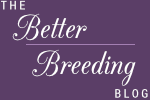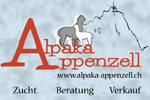Articles by Alpaca World Magazine:
Biosecurity Recommendations for UK Camelid Farmers
Claire Whitehead
Given the recent emergence of several infectious diseases in the UK and the unknown effects of these diseases on South American Camelids, it seems prudent that camelid breeders take stock of their approach to biosecurity in order to protect these animals from disease. This may mean changing some existing practices but the benefits of avoiding contact with disease should far outweigh any inconveniences faced. Members of the British Veterinary Camelid Society have put these recommendations together.
The aim of ?biosecurity? is to prevent the introduction and spread of disease in susceptible populations or herds of animals. Mainly we are talking about viruses, bacteria and parasites. Below is a list of potential diseases and organisms that may be spread from animal to animal:
- Gastrointestinal parasites (including worms, coccidia and fluke)
- Skin parasites, especially Chorioptes mites
- Bacterial pathogens (eg Strep zooepidemicus, Salmonella)
- Mycobacteria (including M bovis (TB) and M avium subsp paratuberculosis (Johne?s Disease)
- Viruses (eg llama adenovirus, respiratory viruses, equine herpesvirus -1)
- Bovine Viral Diarrhoea Virus?
- FMD?
- Bluetongue?
For the latter 3 viral diseases, the pathogenesis of potential disease in camelids and the effects of these viruses in terms of causing clinical disease in our species is largely unknown. Further research is needed, but in the meantime, it would be prudent to include them in biosecurity considerations to try and minimise their effects.
Essentially, biosecurity means protecting your existing herds from exposure to disease that may be brought in by new animals, and minimising the risk of the spread of disease amongst newly introduced animals, while also minimising exposure to potential pathogens (disease-causing agents) that already exist on the farm. It is important to understand that animals may be ?clinically normal? and showing no signs of disease while actually either incubating disease or being subclinically affected ? for example, shedding coccidia although not having diarrhoea. Therefore, it is not adequate merely to exclude animals that appear to be unhealthy as those that appear healthy (and may have passed veterinary health examinations) may still introduce disease onto your farm. A veterinary health certificate only shows that the animal appeared to be healthy at the time of the examination and does not certify the animal as free from disease. It is also important to realise that the stress of moving animals from one farm to another, attending shows, changes in environmental conditions and social status can cause immune system suppression such that an animal that was previously healthy may be more susceptible to development of disease or may start to excrete the virus, bacterium or parasite. For example, it is quite common for an animal to have a negative faecal evaluation for parasites prior to transportation, and then several weeks later to find that the same animal has a clinically significant parasite burden. Commingling of animals at shows or while visiting breeding farms increases the potential exposure of animals to disease while also causing a certain degree of stress-induced immunosuppression. For comparison, imagine a night spent on an aircraft travelling back from holiday ? the effects of sleep deprivation (a stressor) suppress your immune system such that your body is less able to prevent the development of a cold from exposure to a cold virus breathed out by someone on the plane nearby.
We suggest following these practices:
1. Avoid introducing any animals that do not appear healthy to the rest of the herd.
2. Know the disease status of any herd from which you are buying animals, or where your animals are being temporarily housed. Ask about current health status on the farm, but also previous problems with diseases such as gastrointestinal problems (diarrhoea, parasites?), respiratory disease, abortion, ill-thrift or failure of passive transfer. Knowing that a particular farm had a problem with diarrhoea for example is not necessarily a problem: knowing that the problem was identified, diagnosed and correct treatment and prevention measures employed should be reassuring and also shows that the farm knows what they are doing!
3. Insist on the pre-movement testing (PMT) and treatment of animals prior to their arrival. This is to show that they are at least as healthy as your own animals and requires that you have that same knowledge of the health status of the animals on your own farm. There is little point in demanding testing of incoming animals unless you know that your own animals are healthy! Testing might at a minimum involve PMT for bovine TB by the comparative intradermal skin test or blood test as agreed, for BVD antigen (not antibody), and the treatment for endoparasites if required. No farm without an obvious chorioptic mange problem should accept a new animal with active lesions.
4. Isolate and quarantine all new animals before introducing them to the herd. This includes animals that have been to shows or off-farm for breeding purposes since they have been commingling with other animals. If you are introducing solitary animals, you may wish to place herd animals in the quarantine area to reduce the separation stress ? choose less valuable animals for this such as geldings, avoid using breeding or lactating females.
a. Recommended quarantine period: 30 days. This is the gold standard. DEFRA and WAG may well in future introduce post-movement standstill orders of 5-7 days.
b. Operate an all-in, all-out policy such that all animals housed in the quarantine area leave quarantine at the same time. The quarantine period only starts from the time the last animal entered. Do not have animals moving in and out of the quarantine area on an individual basis.
c. The location of the quarantine site should be physically separate from the main herd as well as its handling facilities and housing. Ideally this should be several hundred yards away if possible and positioned such that it is downwind from the main herd, but at the very least, there should be a double fence-line between the groups in order to prevent direct contact.
d. On a larger facility, have different staff working with the quarantine group and do not have the same staff return to the main herd. If this is not possible, tend to the main herd before tending to the quarantine group.
e. Wear clothing and footwear that is dedicated to the quarantine group when tending to this group ? must be washable (eg wellies okay, suede or fabric workboots are not). Colour coding of overalls is an obvious and visible reminder.
f. Monitor the animals in quarantine on a daily basis. Monitor attitude, appetite, water consumption, urination and defaecation as well as for any signs of coughing, discharge from the eyes or nose, diarrhoea etc. Animals showing any signs of disease should be further separated from the rest of the animals in quarantine and evaluated by a vet.
g. Evaluate a faecal sample on entry to the facility and 3 weeks later. Ideally faecal samples should be collected every 3 days and stored in the fridge (Cebra 2007). If there is a subsequent problem with parasite-related illness or excretion then the source of the infestation can be determined. Treatment should be done if animals are found to have significant parasite burdens and their faeces retested 14-21 days later.
5. Minimise exposure of the herd to human visitors. If visitors come to the farm, question them about exposure to other livestock and where they have come from and make sure that they come to the farm wearing clean clothes and boots. Provide visitors with overalls and either Wellington boots or overboots kept on the farm for this purpose. Make sure that hand-washing facilities are available and that they are used.
6. Maintain optimum condition of animals in the herd. This will make them less susceptible to disease.
a. Monitor and record body condition on a monthly basis ? over and under conditioning can cause problems.
b. Ensure optimal nutrition in terms of the feed and minerals that are provided. Mineral deficiencies can be responsible for disease problems in herds. Also, ensure that young growing stock receive sufficient vitamin D to prevent rickets.
c. Provide unlimited access to fresh clean water.
d. Provide protection from the elements ? shade in summer and shelter from rain, wind, cold and snow in the winter. Appropriate bedding (eg straw) may also be necessary for protection from cold.
7. General cleaning and disinfection.
a. Personal hygiene to prevent transmission of pathogens between animals and from animals to humans (known as ?zoonotic disease?).
? Frequent hand washing with hot water and soap
? Cleaning and disinfection of boots
? Thorough washing of clothing used when caring for animals.
b. Disinfection requires surfaces to be clean. All organic matter (faeces, urine, milk, spit) must first be removed before disinfection can work on fences, floors, walls, clothing or hands. Disinfection may be difficult for certain organisms such as Cryptosporidia (which can also cause disease in humans) so is best avoided in the first place by following optimal biosecurity on the farm.
Reference:
Barrington GM et al. Biosecurity and biocontainment in alpaca operations. Small Rum Res 61 (2006), 217-225.
Cebra C. Update on parasitology. International Camelid Conference, Oregon 2007.
Tweet



